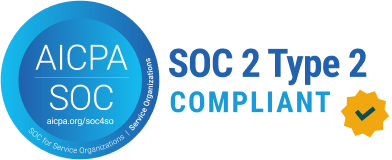
The Complete Stewardship Playbook: 12 Proven Strategies from Leading Organizations
When Ellen Walker at UVA Law School Foundation reflects on their stewardship transformation, her words are striking: “Ovrture has delivered a clear return on investment. It has saved us time, helped us deepen our relationships with donors, and contributed to an increase in giving.”
But Ellen’s success wasn’t accidental. It came from implementing specific best practices that leading advancement teams have developed through years of digital stewardship experience. After working with 65+ institutions across higher education, healthcare, and cultural organizations, we’ve identified the strategies that consistently drive results.
The evidence is compelling: institutions following these practices have documented $1.6 million in additional gifts, achieved >90% open rates among major donors, and transformed their stewardship operations from time-intensive manual processes to efficient, personalized engagement systems.
This comprehensive guide shares 12 proven strategies straight from advancement professionals who’ve mastered digital stewardship. Their insights will help you avoid common pitfalls and accelerate your path to measurable results.
1. Know Your Audience Before You Build Anything
The most successful stewardship programs start with a fundamental question: What do your donors actually want?
Flora Fox, Director of Donor Experience at the University of Miami, learned this lesson early in their Ovrture implementation: “One of the best practices that guided our implementation was knowing our audience. What were their preferences when it came to receiving reports? Did they enjoy sharing them with others, or prefer printing and archiving physical copies? Did they appreciate the institution’s shift to ‘go green’ with digital delivery?”
Flora’s team surveyed their donors to understand these preferences, and the results shaped their entire approach. Some donors loved the environmental benefits of digital delivery, while others needed the option to print and archive physical copies. Most importantly, many donors wanted to share their reports with family members—something that’s seamless with digital but impossible with traditional print reports.
Key Takeaway: Survey your donors about communication preferences before launching any new stewardship approach. Understanding whether they prefer digital vs. print, how they like to consume content, and what they do with reports after receiving them will guide every subsequent decision.
Action Step: Create a simple 5-question survey (you can use the survey module in Ovrture) asking about communication preferences, content interests, and sharing behaviors. Send it to your top 50 donors and use the results to inform your stewardship strategy.
2. Follow Up Without Fear—Your Donors Want to Engage
Here’s a stat that might surprise you: In five years of sending follow-up reminders, not a single donor has complained.
One advancement professional has data to prove it: “Don’t hesitate to follow up. In five years using Ovrture, not one person has complained to me about reminders—even after three follow-ups. Your donors are busy, and a gentle nudge shows you value their engagement with content you’ve specifically created for them.”
The numbers support this approach. Sara Fetherolf at Virginia Commonwealth University saw their open rates jump 20% when they started mailing simple postcards that directed donors to watch for digital reports in their inboxes.
This same professional frames follow-ups not as inconveniences, but as completion of your strategy: “Ovrture is a living platform, not a ‘send and forget’ tool like print. Consistent engagement over time builds stronger relationships than one-time communications.”
Key Takeaway: Your follow-up isn’t pushy; it’s showing donors you value their time and the content you’ve created specifically for them. Most donors appreciate reminders because they’re genuinely busy.
Action Step: Implement a three-touch follow-up sequence: initial delivery, 1-week gentle reminder, and 2-week final notice. Track open rates at each stage to see the engagement lift.
3. Lead with Impact, Not Financials
When Judy Kirschman at Muhlenberg College started analyzing her donor engagement data, she discovered something crucial about donor psychology: “I realized the most important thing to most donors is the impact they’re making, so I moved the impact panel up to be the first panel they see (after the fund description). Since people don’t have a lot of time, they can quickly see the student or faculty member they’re supporting.”
This insight aligns with broader research showing that donors connect with stories, not statistics. But Judy’s approach goes beyond just including impact stories; she strategically placed them where time-pressed donors would see them first.
The lesson extends beyond report design. When you’re creating any donor communication, ask yourself: What’s the first thing donors will see? Is it a dry financial summary, or is it the compelling story of impact their generosity enabled?
Key Takeaway: Front-load your most compelling content. Assume donors will spend limited time with your materials and ensure they see impact stories before financial details.
Action Step: Review your current stewardship reports or communications. Move impact stories and visuals to the top of the first page or screen. Test engagement differences over 2-3 months and over different rounds of reporting.
4. Leverage Platform Features for Maximum Efficiency
Sometimes the smallest features create the biggest transformations. Just ask the donor relations team at DePaul University: “Two of our favorite Ovrture features are Tags and Magic Links! Tags allow you to differentiate reports by college, fund type, or various audiences. Magic Link has streamlined our endowment report delivery process and has made accessing reports easier for donors. What a game changer!”
While Tags help organize content systematically, Magic Links eliminate friction in the donor experience. Instead of donors needing to remember login credentials, they get secure, direct access to their personalized content with a single click.
These seemingly simple features compound into major efficiency gains. When you can categorize content systematically and deliver it frictionlessly, you’re able to scale personalized stewardship in ways that would be impossible with traditional methods.
Key Takeaway: Platform features that seem minor often create the biggest operational efficiencies. Look for tools that eliminate friction in both your workflow and your donors’ experience.
Action Step: Audit your current stewardship process for friction points. Where do you spend unnecessary time categorizing content? Where do donors experience barriers to accessing their materials? Address the biggest pain points first.
5. Build Cross-Functional Collaboration from Day One
The most successful stewardship transformations aren’t just donor relations initiatives; they’re institution-wide collaborations.
One advancement professional credits their success to this approach: “The thing that kept coming up for me was making sure to utilize the help of everyone on your team. We relied on help from our data, finance, IT, financial aid, and fundraising teams, as well as campus partners, to build the best reports.”
This insight goes deeper than just getting help. It’s about getting review and validation from multiple perspectives. “Having others outside of our Donor Relations team review the reports was definitely helpful because they were able to double-check the data and catch things that we didn’t (after looking at so many reports, so many times).”
This collaborative approach serves two purposes: it improves accuracy and quality, while also building institutional buy-in for your stewardship approach.
Key Takeaway: Stewardship excellence requires institutional collaboration, not departmental heroics. Involve other teams in both the creation and review process.
Action Step: Identify 3-4 departments that should review your stewardship materials. Create a structured review process where each team checks their area of expertise before materials go live.
6. Embrace Evolution and Innovation
One of the most valuable pieces of advice comes from Lauren Edlund, Assistant Director of Stewardship & Data Reporting at Boston University: “Allow yourself and the system to evolve over time and ask lots of questions. Don’t stay wedded to using everything in the same way as originally intended, and if you have a great idea, work with Ovrture to build new templates.”
Lauren’s team has become known for their innovative template usage. She encourages her colleagues: “When working on a highly customized report, go through your blueprints and challenge yourself to use a template that you rarely use or have never used before. Share final versions of custom reports with your team to spark inspiration.”
This mindset of continuous innovation has practical benefits. “You never know, that could be the next hot template that gets included in all reports! This is a great way to ensure that your reports stay fresh and that content gets incorporated in new and different ways.”
Key Takeaway: The best stewardship programs continuously evolve. Don’t just implement a system—keep experimenting with new approaches and sharing innovations across your team.
Action Step: Schedule monthly “innovation reviews” where team members share creative approaches they’ve tried. Document what works and incorporate successful experiments into standard practice.
7. Create True Two-Way Engagement
Flora Fox at the University of Miami has redefined what stewardship ROI means: “Our ROI is measured in multiple ways—often beyond traditional metrics. With Ovrture, we can engage donors in ways that weren’t possible through print. Digital reporting creates a true two-way exchange, allowing us to connect more directly and in real time.”
This shift from one-way communication to genuine dialogue transforms donor relationships. Flora explains the multiplier effect: “These reports not only remind donors to fulfill pledge commitments but also provide gentle prompts to increase endowment support. They can even inspire additional giving when donors share their reports with family and friends—a process made seamless by the digital format.”
The two-way engagement also improves program efficiency: “Ovrture also empowers donors to manage their communication preferences, including the option to opt out, ensuring our stewardship efforts are focused on those most eager to engage.”
Key Takeaway: Modern stewardship should facilitate conversation, not just broadcast information. Look for opportunities to gather donor input and enable them to engage with your content.
Action Step: Add interactive elements to your next stewardship communication—surveys, feedback forms, or opportunities for donors to share their thoughts about their giving experience.
8. Focus on Narrative, Not Just Numbers
One advancement professional has observed how digital tools can elevate storytelling: “Impact reporting in Ovrture has placed even greater focus on the narrative piece than our reports previously did. Telling the story that goes with fund financials rounds out the picture we are painting for our donors about their impact on the organization.”
The shift toward narrative has improved relationships with program administrators: “It has led us to lean harder on fund administrators to provide that information. Thankfully, Ovrture’s survey tool has made integrating that narrative into the reports even easier!”
This approach recognizes that donors need both the financial accountability (how their money was spent) and the emotional connection (what their money accomplished). The combination creates more compelling stewardship.
Key Takeaway: Financial data provides accountability; narrative content provides connection. The most effective stewardship includes both elements, with the story helping donors understand the meaning behind the numbers.
Action Step: For each financial report you create, identify at least one specific story that illustrates the human impact of those financial numbers. Use surveys or direct outreach to collect these narratives from program beneficiaries.
9. Use Analytics to Guide Strategy, Not Just Measure Results
Lauren Cunningham, Director of Donor Relations at Northern Illinois University Foundation, discovered that analytics aren’t just for reporting; they’re for strategic guidance: “Regarding the ROI question, having access to open rates and access information is so valuable. With paper reports, you just mail them and pray that no news is good news.”
Lauren’s team uses engagement data to allocate resources more effectively: “The real-time access to who is opening their reports and how much time they spend with them helps us guide resources more effectively. We only have one year of reporting in Ovrture under our belts, but the data from year one is already informing our plans and goals for year 2 and beyond.”
This represents a fundamental shift from hoping your stewardship works to knowing what’s working and doubling down on it.
Key Takeaway: Analytics should inform future strategy, not just measure past performance. Use engagement data to guide resource allocation and content development.
Action Step: Identify your top 3 engagement metrics (open rates, time spent, content interactions). Use these to create “engagement scores” for different donor segments and tailor your approach accordingly.
10. Maintain Organization and Consistency
Elle Casciani, Associate Director of Donor Relations at the University of Virginia Darden School of Business, has developed systems that keep her stewardship operation running smoothly: “I like to keep a checklist of everything that needs to be done to keep myself organized. This includes where to find things on the platform and important notes (such as adding ‘.jpg’ and ‘.pdf’). That way I know when things need to be done and when.”
Elle’s systematic approach extends to continuous improvement: “I also save so many emails I have with you so that I can easily look back. I think once you learn Ovrture as a platform, it really is just a matter of making sure what needs to be done has been filled out.”
Her annual evaluation process demonstrates the importance of consistent tracking: “I like to look back and see how many of our donors have opened their reports and how many times. Each year that I have built reports, I like to challenge myself to think about what a donor might like seeing and enhance our reports.”
Key Takeaway: Operational excellence in stewardship requires systematic organization and consistent evaluation. Create checklists and tracking systems that ensure quality and enable continuous improvement.
Action Step: Create a stewardship operations checklist that covers everything from content creation to post-delivery analytics. Include technical details, deadlines, and quality checkpoints.
11. Ensure Holistic Major Donor Experiences
Ann Bunjan, Manager of Fund Reporting at Indiana University Foundation, has developed an approach that recognizes the complexity of major donor relationships: “Major donors may support more than one area of a campus, school, or unit. So, even though we work with each campus, school, or unit on the impact material that they share for a major donor, we have a staff member that looks at these major donors holistically.”
Ann’s team ensures consistency across touchpoints: “We ensure that the experience they are receiving across campuses, schools, or units is equitable and equally experiential.”
This holistic view prevents major donors from receiving conflicting messages or dramatically different quality experiences from different parts of the same institution.
Key Takeaway: Major donors often support multiple areas of your organization. Coordinate their stewardship experience across departments to ensure consistency and avoid donor confusion.
Action Step: Identify donors who give to multiple areas of your organization. Create a coordination system to ensure they receive consistent messaging and equivalent stewardship quality across all their interests.
12. Transform Operations from Manual to Scalable
Ellen Walker’s experience at UVA Law School Foundation illustrates the operational transformation possible with modern stewardship tools: “Ovrture has transformed the way I create stewardship reports, saving valuable time while elevating both quality and accuracy. Where I once had to build reports by hand, limiting the number of donors I could reach and increasing the risk of errors, I can now produce polished, personalized, and error-free reports efficiently and at scale.”
The transformation goes beyond efficiency. It improves the donor experience: “Most importantly, Ovrture enables us to demonstrate the impact of our donors’ generosity in a clear and compelling way, deepening their connection to our mission.”
This scalability enables stewardship programs that were previously impossible. Auburn University now produces 8,000+ personalized reports annually—a volume that would be completely impractical with manual processes.
Key Takeaway: The goal isn’t just to make your current process more efficient. It’s to enable stewardship approaches that were previously impossible due to time and resource constraints.
Action Step: Calculate how much time your current stewardship process requires per donor. Then identify what you could accomplish if you reduced that time by 50% while improving quality and personalization.
The ROI Reality: What These Strategies Actually Deliver
When advancement teams implement these best practices consistently, the results are measurable:
- $1.6 million in additional gifts documented at one research university after implementing comprehensive digital stewardship
- >90% open rates among top donors at major universities using personalized digital approaches
- 20% improvement in engagement with simple follow-up strategies
- 8,000+ annual reports produced by teams that previously struggled to create hundreds manually
- $900,000+ in new gifts after impact reports at Boston University
- $700,000+ in new gifts after financial reports at the same institution
But the ROI extends beyond immediate fundraising results. Ellen Walker’s quote from the start of these best practices frames it perfectly: “Ovrture has delivered a clear return on investment. It has saved us time, helped us deepen our relationships with donors, and contributed to an increase in giving.”
Your Next Steps
Based on experiences from 65+ institutions, the advancement teams achieving breakthrough results aren’t just using better technology; they’re implementing proven strategies developed by their peers. Every quote in this guide represents real experience from advancement professionals who transformed their stewardship operations and delivered measurable results.
Ready to transform your stewardship approach with these proven strategies? Let’s talk about how Ovrture can help you implement these best practices and join the institutions documenting measurable ROI from their digital stewardship programs.

Gideon Rosen
Account Supervisor, Client Engagement
Gideon Rosen
Account Supervisor, Client Engagement
Gideon helps clients with whatever is needed to make using Ovrture second nature. He leads the onboarding process to successfully launch new systems and engages with existing clients/tenants to drive adoption.
 Back to Updates
Back to Updates
